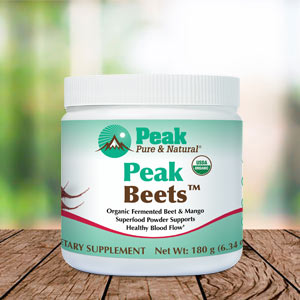Get Easy Health Digest™ in your inbox and don’t miss a thing when you subscribe today. Plus, get the free bonus report, Mother Nature’s Tips, Tricks and Remedies for Cholesterol, Blood Pressure & Blood Sugar as my way of saying welcome to the community!
The at-home test that determines heart attack risk in minutes

According to the American Heart Association, someone in the United States has a heart attack every 40 seconds.
This means that in just one year, 805,000 people will have a heart attack, with 605,000 of those being first-time heart attacks and the other 200,000 being repeat heart attacks.
It’s no wonder then that heart disease — the root cause behind heart attacks — is the leading cause of death in our country.
And it’s a clear warning that if you want to live a longer life, knowing whether or not you’re at risk for a heart attack is a must. That’s one reason regular checkups are important.
But understanding your heart risks may have just gotten simpler…
Swedish scientists have created a 14-question at-home test that takes 5 to 8 minutes — and they say it can identify up to two-thirds of people who could be in the sights of a heart attack.
Detailed questions plus advanced algorithm
The researchers based their study on data from 25,000 people aged 50–64 who underwent computed tomography, which can measure a person’s degree of atherosclerosis — the buildup of plaque on artery walls that can cause them to narrow and block critical blood flow.
When this happens it deprives your heart of oxygen-rich blood and can lead to a heart attack. It can also increase risk of stroke.
By comparing the images of the participants’ hearts with questionnaires they completed, the researchers were able to narrow in on which factors had the closest links with the degree of atherosclerosis, including:
- Age
- Gender
- Weight
- Waist circumference
- Smoking (If you smoke, work on quitting now)
- High blood pressure
- High blood fats (cholesterol)
- Diabetes
- Family history of cardiovascular disease
From there, answers are fed into a special algorithm, which the scientists say can detect 65% of individuals at the highest risk of cardiovascular disease.
“A heart attack often comes out of the blue,” he says. “Many of those who suffer heart attacks are apparently healthy and asymptomatic, but have fatty deposits in the coronary arteries, known as atherosclerosis,” said lead researcher, Professor Göran Bergström.
“The results show that our home test is as accurate as a clinic examination using blood tests and blood pressure measurements. If we can make the test widely available within healthcare, it can save lives and prevent suffering by helping us to identify those who are at high risk of heart attack or who are currently undertreated.”
Gauging and reducing your heart attack risk
Their test may not be available yet, but there’s an online test you can take right now to see where your risk falls when it comes to metabolic syndrome.
You may notice that several of the health concerns on their list — waist size, blood pressure, cholesterol and blood sugar — make up the cluster of conditions that define metabolic syndrome, a surefire precursor to heart attack or stroke.
But test or no test, consider metabolic syndrome as the one thing to avoid or reverse. There are a few ways to do that…
- Exercise: A study found that even light exercise can counteract the heightened heart disease risk caused by metabolic syndrome. If you can exercise a little harder, the lower your risk can go. Exercise can lower your risk even with a family history of heart problems.
- Diet: The good news is you have choices. Harvard has identified 4 eating patterns that can lower heart disease risk.
- Ditch ultraprocessed foods: They’re tied to metabolic syndrome. Nuff said.
- Support your arteries with vitamin K2: Emerging evidence from animal and clinical studies has associated low K2 levels with calcification and an elevated risk of heart problems.
- Take advantage of Mediterranean spices: If free radicals overwhelm the body, oxidative stress leads to diseases, like type 2 diabetes. A handful of spices were found to greatly improve glycemic index.
Editor’s note: There are perfectly safe and natural ways to decrease your risk of blood clots including the 25-cent vitamin, the nutrient that acts as a natural blood thinner and the powerful herb that helps clear plaque. To discover these and other secrets of long-lived hearts, click here for Hushed Up Natural Heart Cures and Common Misconceptions of Popular Heart Treatments!
Sources:
Home test reveals the risk of heart attack in five minutes – EurekAlert!
Heart Disease and Stroke Statistics – 2022 Update – American Heart Association
Heart Disease Facts – CDC














